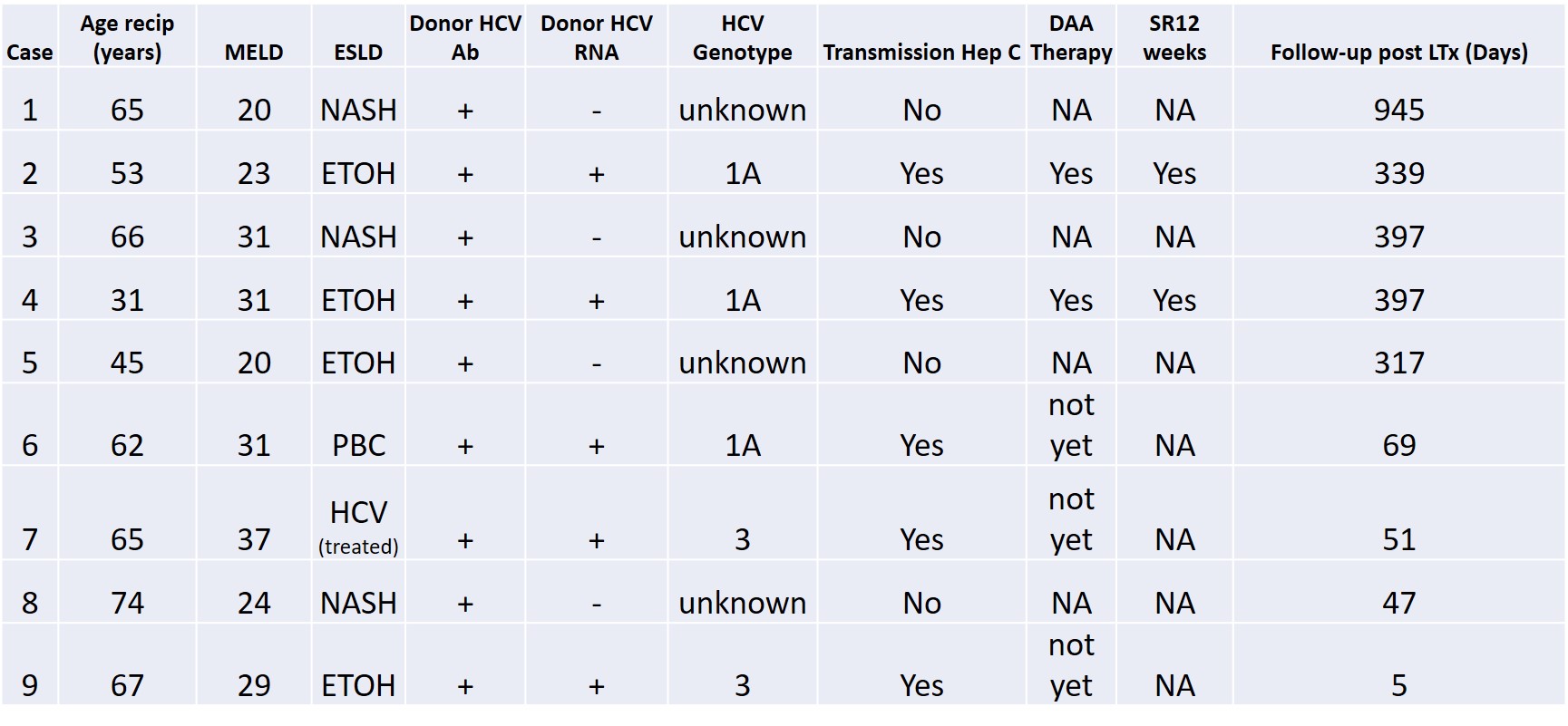Ready for Prime Time: Intentional Allocation of Hepatitis C Positive Livers into Hepatitis C Negative Recipients
1Surgery, Division of Transplantation, University of Massachusets, Worcester, MA, 2Medicine, Division of Hepatology, University of Massachusets, Worcester, MA
Meeting: 2019 American Transplant Congress
Abstract number: 141
Keywords: Allocation, Hepatitis C, Infection, Liver
Session Information
Session Name: Concurrent Session: Liver: MELD, Allocation and Donor Issues (DCD/ECD) I
Session Type: Concurrent Session
Date: Sunday, June 2, 2019
Session Time: 4:30pm-6:00pm
 Presentation Time: 5:06pm-5:18pm
Presentation Time: 5:06pm-5:18pm
Location: Room 312
*Purpose: The current discrepancy between supply and demand of liver grafts has dramatically increased the waiting time and mortality on the waiting list. The recent approval of direct-acting-antivirals (DAA) dramatically changed the landscape of hepatitis C (HCV) treatment with pangenotypic efficiency superior to 95%. This success opened an opportunity to use Hep C positive livers into hep c negative recipients.
*Methods: Methods: We reviewed the electronic records of all patients that received a liver from a hepatitis C positive donor (either HCV Ab positive or hepatitis C NAT positive). We recorded donor and recipients demographics, complications and response to treatment at 12 weeks.
*Results: Results: Between 04/30/2016 and 11/30/2018 we transplanted 9 recipients with HCV positive livers (Five of these donors were viremic-RNA+). To the best of our knowledge, we were the first group to perform intentional allocation of hepatitis c positive livers into hepatitis c negative recipients. The median MELD score of recipients was 29 (range 20-37). The median follow-up was 491 days (range 37-945 days). As expected, there was transmission in all five patients that received NAT positive livers (viremic donors) and in none that received NAT- livers (non-viremic donors). There was no problem to obtain insurance approval for DAA therapy. Therapy with DAA started as early as 2 weeks. SVR at 12 week occurred in two patients (the other three are still under treatment). There was no transmission of HIV and Hep B.
*Conclusions: Conclusions: Here, we report our case-series of intentional allocation of hep c positive livers into hep c negative recipients, describe their short and long-term outcomes. The intentional use of hep c positive donors into hep c negative patients is safe. It has the potential to expand the donor pool and may decrease mortality on the wait list.
To cite this abstract in AMA style:
Martins PN, Movahedi B, Devuni D, Mahboub P, Bozorgzadeh A. Ready for Prime Time: Intentional Allocation of Hepatitis C Positive Livers into Hepatitis C Negative Recipients [abstract]. Am J Transplant. 2019; 19 (suppl 3). https://atcmeetingabstracts.com/abstract/ready-for-prime-time-intentional-allocation-of-hepatitis-c-positive-livers-into-hepatitis-c-negative-recipients/. Accessed December 15, 2025.« Back to 2019 American Transplant Congress

